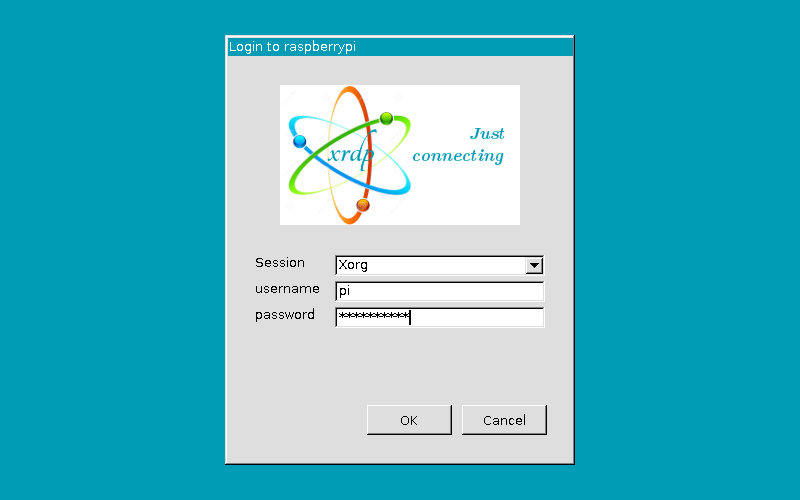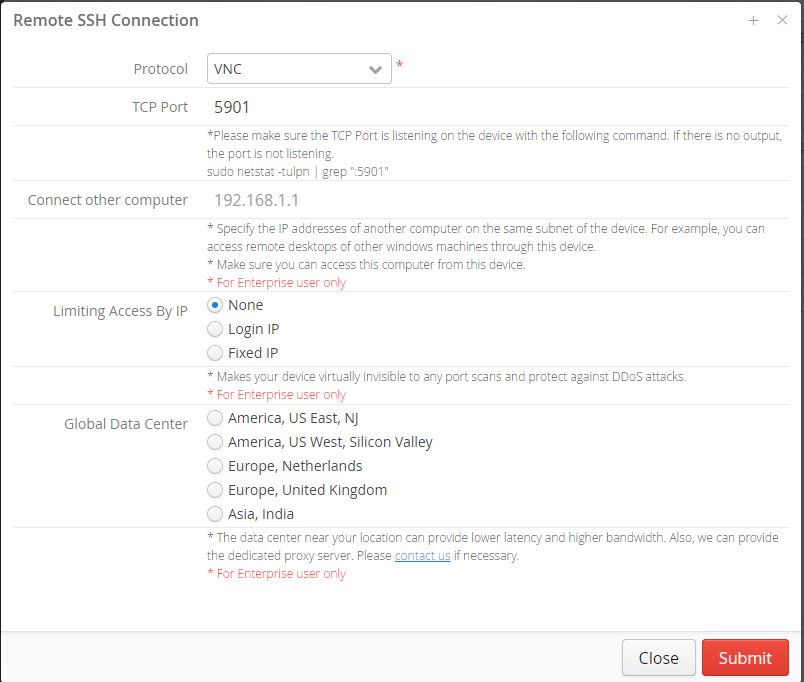Raspberry Pi RemoteIoT: The Ultimate Guide To Transforming Your Smart Home
As the world increasingly embraces the Internet of Things (IoT), Raspberry Pi RemoteIoT has emerged as a groundbreaking solution for controlling and managing smart devices remotely. With its affordability, versatility, and ease of use, Raspberry Pi has become a favorite among hobbyists, developers, and professionals alike. Whether you're a tech enthusiast or a homeowner looking to upgrade your smart home system, Raspberry Pi RemoteIoT offers endless possibilities.
RemoteIoT functionality on Raspberry Pi allows users to connect, monitor, and manage IoT devices from anywhere in the world. This technology not only simplifies home automation but also enhances security, energy efficiency, and convenience. In this comprehensive guide, we'll explore everything you need to know about Raspberry Pi RemoteIoT, including setup, applications, and best practices.
Whether you're new to Raspberry Pi or an experienced user, this article will provide valuable insights and practical tips to help you harness the full potential of Raspberry Pi RemoteIoT. Let's dive in!
Read also:Kirsteen Sweet A Comprehensive Guide To Her Life Career And Achievements
Table of Contents:
- Introduction to Raspberry Pi
- What is RemoteIoT?
- Raspberry Pi RemoteIoT Setup
- Applications of RemoteIoT
- Benefits of Using RemoteIoT
- Security Considerations
- Troubleshooting Common Issues
- Optimizing Performance
- Future Trends in Raspberry Pi RemoteIoT
- Conclusion
Introduction to Raspberry Pi
Raspberry Pi is a compact, single-board computer designed to promote learning about computer science and electronics. Since its launch in 2012, it has become a staple in the maker community due to its low cost, flexibility, and open-source nature. Raspberry Pi RemoteIoT leverages this powerful platform to enable seamless remote control of IoT devices.
Key Features of Raspberry Pi
- Compact and lightweight design
- Supports multiple operating systems
- Highly customizable hardware and software
- Wide range of GPIO pins for interfacing with sensors and actuators
- Strong community support and extensive documentation
With these features, Raspberry Pi provides an ideal foundation for building robust RemoteIoT solutions.
What is RemoteIoT?
RemoteIoT refers to the ability to control and interact with IoT devices remotely over the internet. When combined with Raspberry Pi, RemoteIoT enables users to automate various aspects of their home or workplace, such as lighting, temperature control, security systems, and more. By integrating Raspberry Pi with cloud platforms and APIs, you can create a centralized system for managing all your IoT devices.
How Does RemoteIoT Work?
RemoteIoT operates through a combination of hardware, software, and network connectivity. Here's a simplified breakdown of the process:
- IoT devices are connected to Raspberry Pi via GPIO pins or wireless protocols like Wi-Fi or Bluetooth.
- Raspberry Pi processes data from these devices and sends it to a cloud server or local network.
- Users access the system remotely using a web interface, mobile app, or API calls.
- Commands issued by the user are relayed back to the IoT devices for execution.
This cyclical flow ensures real-time communication and control, making Raspberry Pi RemoteIoT an indispensable tool for modern smart homes.
Read also:Will Smith Sister Ashley A Comprehensive Guide To Her Life And Influence
Raspberry Pi RemoteIoT Setup
Setting up Raspberry Pi for RemoteIoT involves several steps, including hardware preparation, software installation, and network configuration. Below is a detailed guide to help you get started:
Hardware Requirements
- Raspberry Pi (any model with Wi-Fi capabilities)
- MicroSD card with at least 16GB storage
- Power supply compatible with your Raspberry Pi model
- IoT devices (e.g., smart bulbs, cameras, sensors)
- Network cables or wireless adapter (if necessary)
Software Installation
Begin by installing the latest version of Raspberry Pi OS on your microSD card. Once the OS is installed, connect your Raspberry Pi to a monitor, keyboard, and mouse to complete the initial setup. Update the system using the following commands:
- sudo apt update
- sudo apt upgrade
Next, install necessary software packages such as Node-RED, Mosquitto MQTT broker, and any libraries required for your specific IoT devices.
Applications of RemoteIoT
Raspberry Pi RemoteIoT finds applications in various fields, including:
Home Automation
Control lighting, thermostats, and appliances remotely to enhance comfort and energy efficiency.
Environmental Monitoring
Use sensors to track temperature, humidity, air quality, and other environmental factors in real-time.
Security Systems
Integrate cameras, motion detectors, and door locks into a centralized security system accessible from anywhere.
These applications demonstrate the versatility and potential of Raspberry Pi RemoteIoT in transforming everyday environments into intelligent ecosystems.
Benefits of Using RemoteIoT
Adopting Raspberry Pi RemoteIoT offers numerous advantages, including:
- Cost-effectiveness: Raspberry Pi is significantly cheaper than many commercial IoT solutions.
- Customizability: Tailor your setup to meet specific needs and preferences.
- Scalability: Easily add more devices and expand your system as required.
- Energy efficiency: Automate power-hungry devices to reduce energy consumption.
- Convenience: Manage all your IoT devices from a single interface.
These benefits make Raspberry Pi RemoteIoT an attractive option for both personal and professional use.
Security Considerations
While Raspberry Pi RemoteIoT offers incredible functionality, it's crucial to prioritize security to protect your devices and data. Implement the following best practices:
- Use strong, unique passwords for all accounts and devices.
- Enable encryption for data transmission using protocols like HTTPS or TLS.
- Regularly update your Raspberry Pi OS and software to patch vulnerabilities.
- Restrict access to your network using firewalls and IP whitelisting.
By following these guidelines, you can ensure a secure and reliable RemoteIoT setup.
Troubleshooting Common Issues
Encountering problems during setup or operation is not uncommon. Here are some common issues and their solutions:
Device Connectivity Problems
Ensure all devices are properly connected and powered. Check network settings and restart the Raspberry Pi if necessary.
Software Conflicts
Uninstall conflicting software and reinstall required packages. Refer to official documentation for troubleshooting tips.
Addressing these issues promptly will help maintain smooth operation of your Raspberry Pi RemoteIoT system.
Optimizing Performance
To maximize the performance of your Raspberry Pi RemoteIoT setup, consider the following tips:
- Use a fast and reliable internet connection.
- Optimize code and scripts for efficiency.
- Monitor system resources and manage processes effectively.
- Regularly back up important data and configurations.
By adhering to these practices, you can ensure optimal performance and longevity of your system.
Future Trends in Raspberry Pi RemoteIoT
The future of Raspberry Pi RemoteIoT looks promising, with advancements in AI, machine learning, and edge computing set to revolutionize the field. Emerging trends include:
- Increased integration with voice assistants like Alexa and Google Assistant.
- Development of more energy-efficient hardware and software solutions.
- Enhanced security features to protect against cyber threats.
Staying informed about these trends will help you leverage the latest technologies for your Raspberry Pi RemoteIoT projects.
Conclusion
Raspberry Pi RemoteIoT represents a powerful and versatile solution for managing IoT devices remotely. By following the guidelines outlined in this article, you can create a secure, efficient, and scalable system tailored to your needs. We encourage you to experiment with different applications and share your experiences with the community.
Don't forget to leave a comment below or explore other articles on our site for more insights into Raspberry Pi and IoT technologies. Together, let's shape the future of smart living!
Article Recommendations


